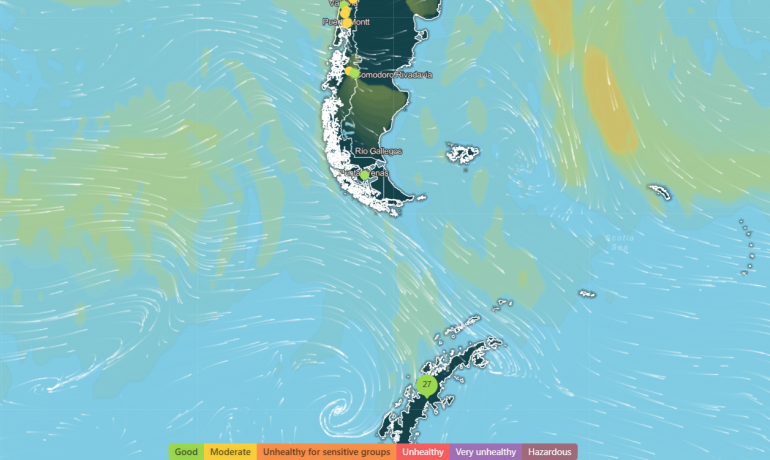Ukrainian polar explorers installed the first AirVisual Pro air quality analyzer of the well-known international network IQAir in the Antarctic.
On the website of this service, you can check air quality indicators from most countries of the world, including Ukraine. Recently, it was in the IQAir rating that Kyiv was in first place in terms of air pollution due to smog.
Now, this network also has data from our Antarctic station, “Akademik Vernadsky”. The system allows you to monitor a number of parameters both inside the station building and outside.
Why is this important? The main air quality indicator is atmospheric aerosol, namely PM2.5 particles (PM – Particulate Matter). These are small solid aerosol particles that are suspended in the air and have a size of less than 2.5 micrometers in diameter.
These particles can be both naturally formed and formed by human activity. PM2.5 particles are the most harmful to health because they penetrate the respiratory tract and can even get into the brain (especially even smaller PM1 particles with a diameter of less than 1 micrometer).
The concentration parameter of PM2.5 particles in the air in micrograms per cubic meter, together with several other atmospheric pollutants, such as PM10 particles, surface ozone, NO2, SO2, and CO gases, determine the so-called air quality index AQI. However, the concentration of PM2.5 is the most important part of the AQI assessment.
Thanks to the IQAir system, we will have a continuous series of data on air quality and the amounts of atmospheric aerosols of various sizes in the vicinity of Vernadsky. This will allow us to monitor whether Antarctica really remains a clean region, or whether atmospheric pollutants are already penetrating here, and how the air quality is changing in general.
It is very convenient that the information is displayed in real time on the network’s website, so that anyone can access it. For example, the initiator of the monitor installation, geophysicist Gennadi Milinevsky (the first Base Commander of the Vernadsky station in 1996-97 overwinter), can monitor changes in the parameters from his workplace and take them into account in other research, including ozone monitoring.
More photos.


